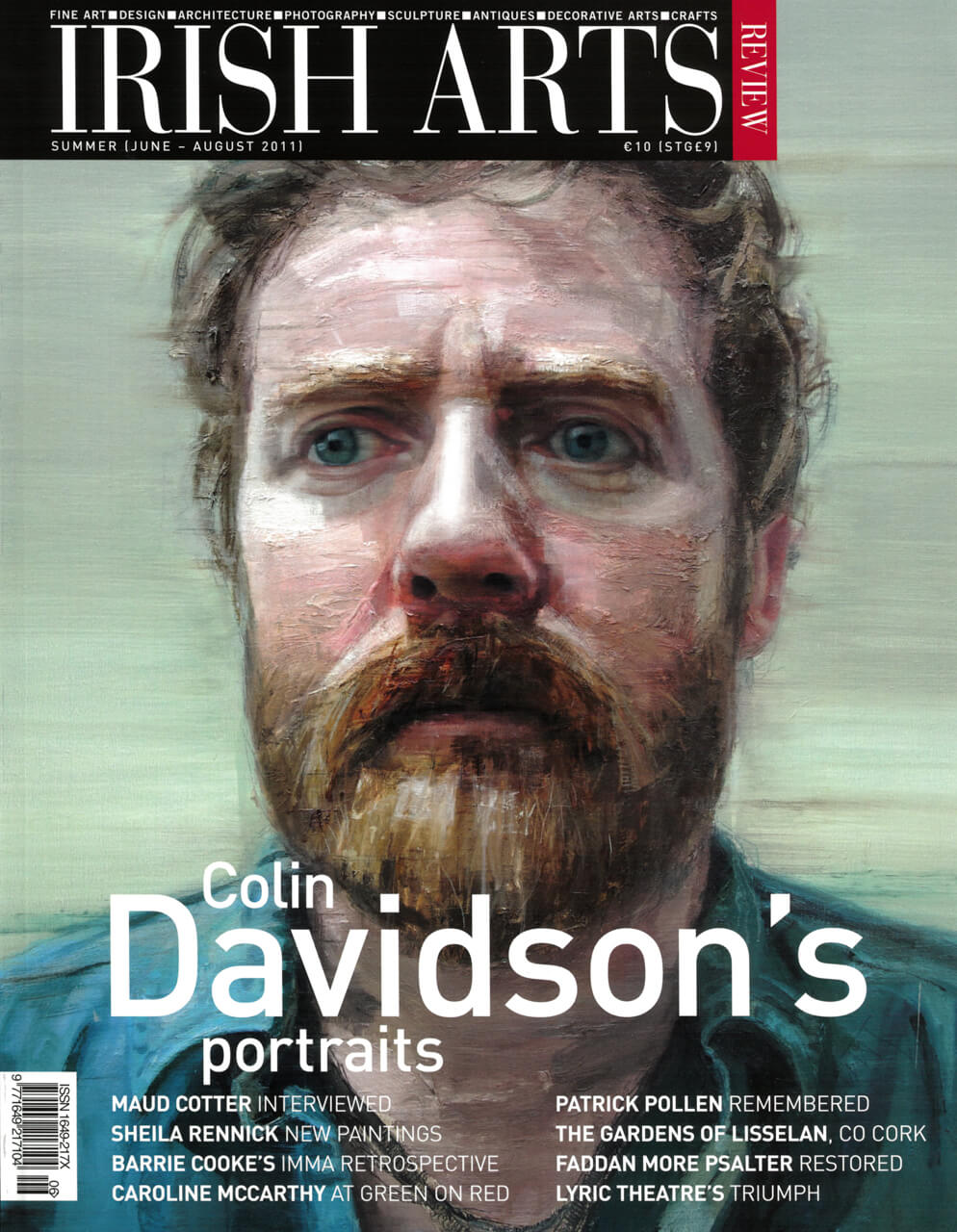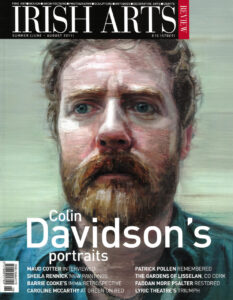

Although the themes running through Cormac Boydell’s exhibition at the Irish College, Paris in 2011 had their origins in the past, the finished objects are shaped by his distinctive contemporary style writes Frances Ruane this article first featured in the Summer 2011 edition of the Irish Arts Review
Although Cormac Boydell’s exhibition of new ceramics at the Centre Culturel Irlandais, Paris, revisits themes that have preoccupied him over the years, there are new twists and turns as the artist connects these ideas with the place where the show is taking place. Many of the wall-pieces refer to Irish and French mythology as well as to older art and artefacts from both countries. The image of a bull has often appeared in his work but here the myth of Cuchulainn and the Brown Bull of Ulster collides with images inspired by the ancient cave paintings of Lascaux. Boydell expands the animal theme in another piece that depicts King Cormac MacAirt who, according to medieval Irish legend, was carried off and raised by she-wolves (Fig 1). This motif is echoed in La B√™te du Gévaudan, the man-eating wolf that was an object of terror in 18th-century France.
However, the majority of pieces in this show take their inspiration in various ways from predecessors in the visual arts rather than from myth. In one series Boydell reworks the blue and white Chinese-inspired porcelain that is so pervasive in the history of ceramic art: the Chinese imitated by the Dutch, who eventually were imitated by everyone else. Like many of his Irish contemporaries, Boydell grew up surrounded by the ubiquitous Arklow Willow pattern. By drawing on this tradition, his blue and white pieces, often edged in gold, feel both familiar and new. The subjects for these pieces are ‘landmark‚’ places in Paris and Ireland, the latter focussing on the dramatic coastline near his studio on the Cork/Kerry border. These recall another outdated convention: the commemorative plates of historic or scenic places that were frequently aimed at the tourist market. His images of places like Notre Dame and the Skelligs (Fig 4) bring that tired, familiar and sometimes kitsch tradition back into the realm of art; the strength and fluidity of his drawing brings energy and freshness into each piece.
Other works in the exhibition are overtly connected to French art – the ‘apr√®s Matisse‚’ series borrows compositions from paintings by the great master and reinterprets them in ceramics. While in France a few years ago, Boydell was bowled over by an exhibition of paintings by Derain and Matisse, particularly the looseness of the early Matisse pictures done in Collioure around 1906. The invitation for him to exhibit his own work in Paris triggered a renewed interest in these paintings, their linear quality having a natural connection to Boydell’s own style.
With the current emphasis on originality, the tradition of appropriating motifs from past artists is often overlooked. More prevalent in Eastern art and in older Western art, it occasionally surfaces in more modern painting. Manet’s Déjeuner sur l’herbe overtly paraphrased a classical composition by Giorgione. Manet’s unashamed appropriation of Titian’s Venus of Urbino in his own painting, Olympia, had such an impact on Cézanne and Picasso that they both did their own parodies of Manet’s painting. Similarly amused by the idea of borrowing from the borrowed, the American artist Larry Rivers more recently did his own take-off of Manet’s painting. And van Gogh also embraced the idea of an interpretative copy. One just has to look at his Hiroshige-inspired Flowering Plum Tree to see how another artist’s work can be the starting point for improvisation. Boydell used the Matisse paintings as a starting point, simplifying each composition and adapting it to the tricky demands of ceramic glaze application. Gradually he improvised more freely around the original motif to create an homage to the master with its own distinct character.
His robust handling of clay, with its irregular edges and hand-modelled surfaces, enhances the work’s expressiveness. None of Boydell’s source material for this show is so richly tactile: the handling of clay and glazes is central to his art. Although the themes running through the exhibition have their origins in the past, the finished objects are shaped by Boydell’s distinctive contemporary style, which is fluid, quirky and full of humour.
All images © The Artist. Photography Sylvain Deleu
Cormac Boydell ‘Un esprit sauvage‚’, was at the Irish College, Paris, 8 June – 13 July 2011.
Frances Ruane HRHA lectures and writes on contemporary art and design.
From the IAR Archive
First published in the Irish Arts Review Vol 28, No 2, 2011



